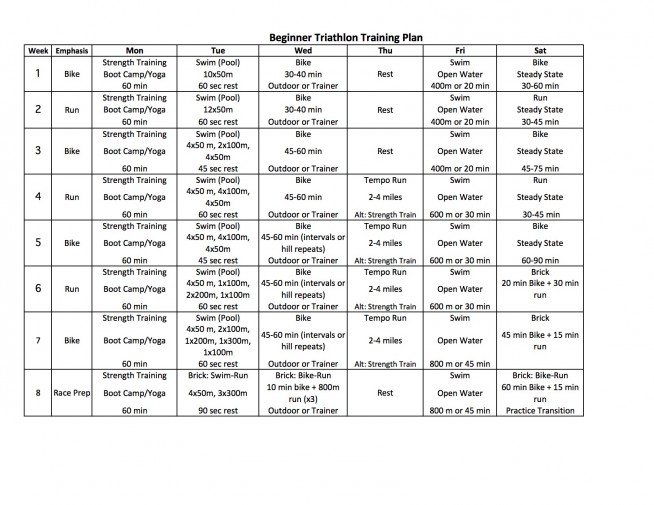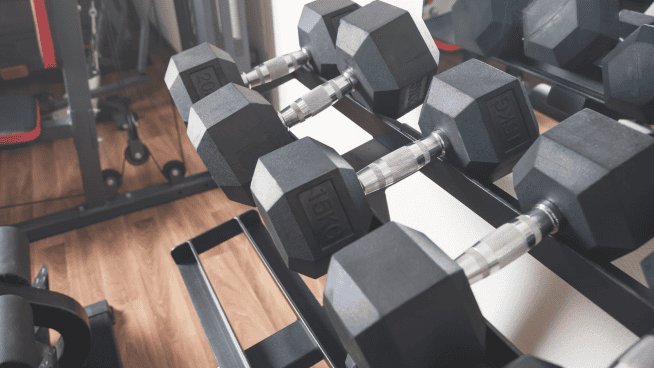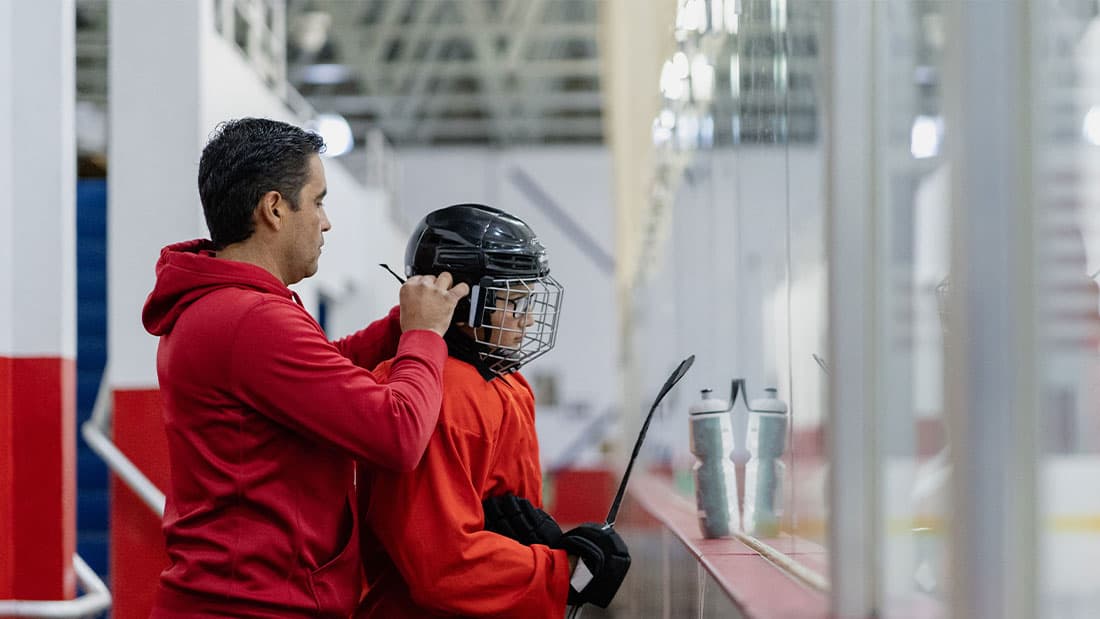Triathlons are amazing events because anyone can compete. For those who want to finish a beginner triathlon, various distances and supportive race environments allow people of all abilities to swim, bike and run—or, as some have paraphrased, “float, coast and stroll.”
The first organized triathlon was in Mission Bay (San Diego, California) in 1974, and the sport has exploded in recent years. Each year, the Ironman World Championships are held in Kona, Hawaii, where triathletes swim 2.4 miles, bike 112 miles and run 26.2 miles. Yes, they run a marathon after swimming almost two and a half miles in the ocean and biking over 100 miles in the heat.
Fortunately for the rest of us, beginner triathlons (a.k.a., sprint-distance events) also exist:
- Swim ¼ to ½ mile (400-800 meters)
- Bike 6.2 to 15 miles (10-20K)
- Run 2 to 4 miles (4-6K)
This article provide beginner triathletes with an overview of the sport and preps them for race day. Rather than a complete “Triathlon 101,” it gets down to the nitty-gritty of a triathlon training program. The best way to reduce race day anxiety is to train properly.
Specificity of Training
If you are moving to triathlon from another sport, you probably have a good fitness base. But all forms of fitness and training are specific. Soccer players, for example, have incredible metabolic “engines” and can run up to 6 miles in a game. But “jog–sprint–stop” for 6 miles is a different process for the body than running 6 miles straight.
The goal is to make your triathlon race day experience enjoyable. You should push yourself and make it challenging at times, but the race should not be an uphill battle with a headwind the entire time. Therefore, part of your training should mimic the intensity of race day (short-duration, high-intensity intervals).
Another key part of triathlon training is the “brick workout”—a swim or bike ride followed by a run—so named because your legs will feel as heavy as bricks. Teaching the leg muscles to turn over quickly while fatigued is very important.
The 5 Components of Triathlon
Triathlon events actually have 5 components: Swim, Bike, Run, Transitions and Nutrition. The last two are crucial parts of your training. Triathletes transition twice during the race—from the swim to the bike and from the bike to the run. Learning how to quickly take off a wetsuit and switch from biking to running shoes can set you apart on race day.
Nutrition becomes more important in the longer races, but even during a sprint, you should stay hydrated and not eat anything new on race day. Practice your pre-race meals before your long workouts and attend to your hydration during all workouts.
Consistency is King
If you cannot stick to the training plan 100 percent, its better to pick up where you left off than to cram four weeks of training into two. It is also better to shorten a workout than to skip it entirely.
Above all, have fun with your new sport. Encourage (or dare) a friend to train and race with you. But come race day, compete only against yourself. If it’s your first triathlon, you are guaranteed to set a PR (personal record)!
RECOMMENDED FOR YOU
MOST POPULAR
Triathlons are amazing events because anyone can compete. For those who want to finish a beginner triathlon, various distances and supportive race environments allow people of all abilities to swim, bike and run—or, as some have paraphrased, “float, coast and stroll.”
The first organized triathlon was in Mission Bay (San Diego, California) in 1974, and the sport has exploded in recent years. Each year, the Ironman World Championships are held in Kona, Hawaii, where triathletes swim 2.4 miles, bike 112 miles and run 26.2 miles. Yes, they run a marathon after swimming almost two and a half miles in the ocean and biking over 100 miles in the heat.
Fortunately for the rest of us, beginner triathlons (a.k.a., sprint-distance events) also exist:
- Swim ¼ to ½ mile (400-800 meters)
- Bike 6.2 to 15 miles (10-20K)
- Run 2 to 4 miles (4-6K)
This article provide beginner triathletes with an overview of the sport and preps them for race day. Rather than a complete “Triathlon 101,” it gets down to the nitty-gritty of a triathlon training program. The best way to reduce race day anxiety is to train properly.
Specificity of Training
If you are moving to triathlon from another sport, you probably have a good fitness base. But all forms of fitness and training are specific. Soccer players, for example, have incredible metabolic “engines” and can run up to 6 miles in a game. But “jog–sprint–stop” for 6 miles is a different process for the body than running 6 miles straight.
The goal is to make your triathlon race day experience enjoyable. You should push yourself and make it challenging at times, but the race should not be an uphill battle with a headwind the entire time. Therefore, part of your training should mimic the intensity of race day (short-duration, high-intensity intervals).
Another key part of triathlon training is the “brick workout”—a swim or bike ride followed by a run—so named because your legs will feel as heavy as bricks. Teaching the leg muscles to turn over quickly while fatigued is very important.
The 5 Components of Triathlon
Triathlon events actually have 5 components: Swim, Bike, Run, Transitions and Nutrition. The last two are crucial parts of your training. Triathletes transition twice during the race—from the swim to the bike and from the bike to the run. Learning how to quickly take off a wetsuit and switch from biking to running shoes can set you apart on race day.
Nutrition becomes more important in the longer races, but even during a sprint, you should stay hydrated and not eat anything new on race day. Practice your pre-race meals before your long workouts and attend to your hydration during all workouts.
Consistency is King
If you cannot stick to the training plan 100 percent, its better to pick up where you left off than to cram four weeks of training into two. It is also better to shorten a workout than to skip it entirely.
Above all, have fun with your new sport. Encourage (or dare) a friend to train and race with you. But come race day, compete only against yourself. If it’s your first triathlon, you are guaranteed to set a PR (personal record)!











